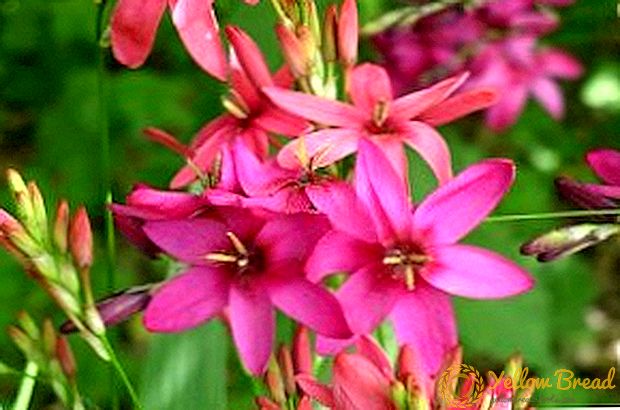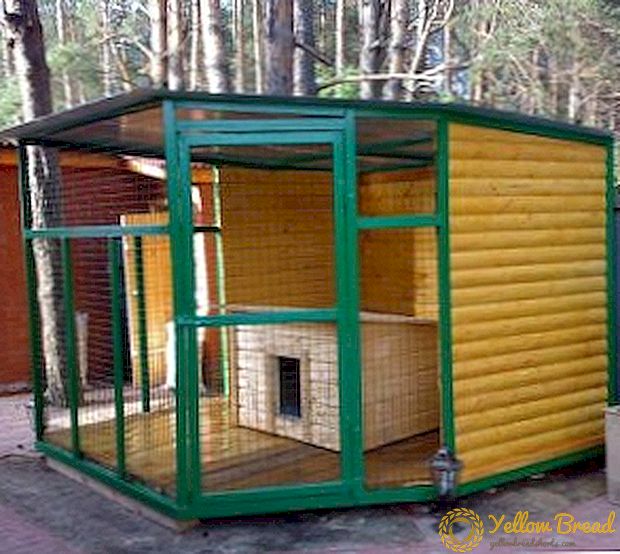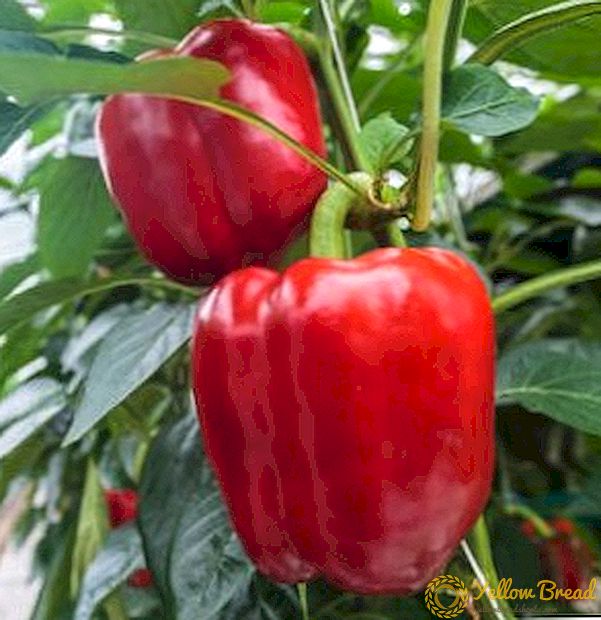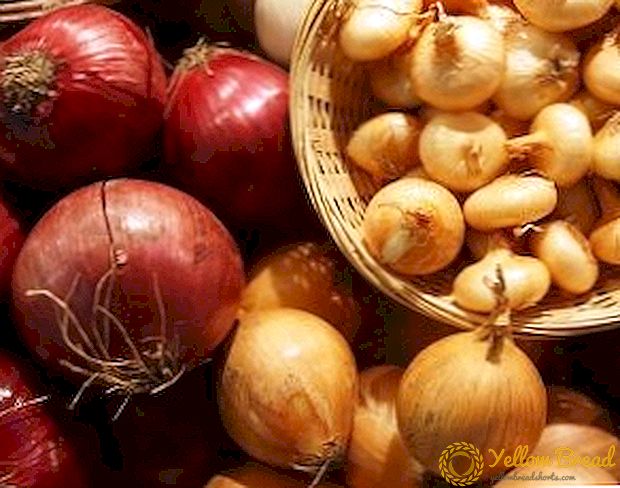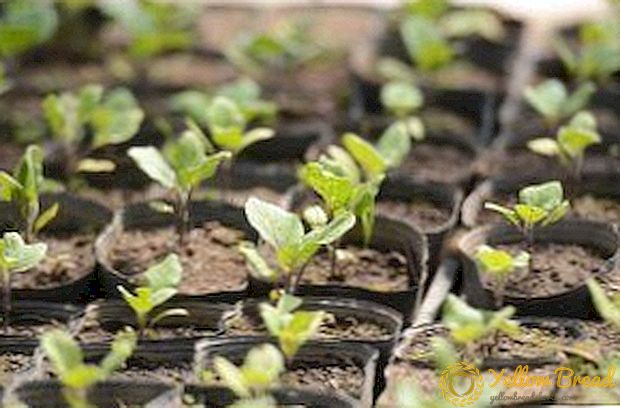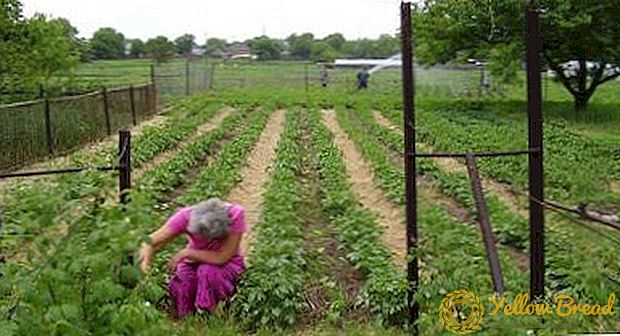
Eggplant is a popular vegetable crop that is more convenient to grow with seedlings. Plants are very demanding on the composition of the soil, they hardly germinate and need a container that preserves the integrity of fragile roots.
There is an alternative to the usual containers and cups. Among the tested methods that have shown good results are growing seedlings in peat tablets, snails or on toilet paper.
Eggplant seedlings in peat tablets - planting and growing
Growing eggplant seedlings in peat tablets is modern and very convenient way. It eliminates the hassle of self-mixing the substrate, disinfection, screening, fertilizing the soil.
Way ideal for working with a small amount of seedsgrowing rare and valuable varieties of eggplant. For industrial cultivation of plants it may not be too convenient.
Peat tablets: what is it?
 Peat tablets are a simple, convenient and safe way to grow seedlings. Unlike pots, tablets do not have dense walls of pressed cardboard, which can not penetrate the weak roots of eggplant.
Peat tablets are a simple, convenient and safe way to grow seedlings. Unlike pots, tablets do not have dense walls of pressed cardboard, which can not penetrate the weak roots of eggplant.
Pills made from pressed high peat, to which nutrients are added: growth stimulants, disinfectants, anti-stress supplements. The acidity of peat is neutral, it is suitable for most plants, including eggplant.
Tablets can be used for a full growth cycle of seedlings, transshipments or picks are not needed. Podroschennye plants will be moved to a permanent place of residence, along with a tablet, braided roots.
Arguments in favor of peat tablets:
- economy;
- convenience cultivation;
- ecological security;
- warranty excellent germination;
- ideal for growing different varieties of eggplant;
- no need to use additional stimulants or fertilizers;
- pills prevent typical solanaceous diseases (blackleg, root rot);
- suitable for the full cycle of seedling development, from seed germination to planting in the greenhouse.
How to use tablets: step by step instructions
 Peat tablets of the desired size are set in a deep container flooded with warm water.
Peat tablets of the desired size are set in a deep container flooded with warm water.
It is advisable to put the pills with a hole up, it is in it that the eggplant seed will be placed. During the swelling, compressed peat will increase by 7-8 times. It is desirable to pour water portions, as absorbed.
How to plant eggplants on seedlings in peat tablets? Before planting seeds do not require any preparatory activities. It is better to pour a granulated planting material with a small amount of water, then gently pin the casing with a toothpick to facilitate germination. The eggplant seed is placed in the hole on the top of the pill and gently sunk by your fingers.. Read more about seed preparation before sowing.
For convenience, you can use a wooden stick, it will help to slightly expand the hole. Thus, all planting material is sown, then the tablets are placed in a deep transparent container.
It can be replaced with a plastic cake box or a deep container with a tray and a lid. Be sure to have drainage holes in the bottom. Tanks are installed on the pallet and placed in heat for the speedy germination of seeds.
Tablets should not be too tight. Peat is moistened as needed. The container is covered with a lid or tightened with a plastic film, but it is necessary to ventilate it once a day.
For successful germination bright sunlight is needed. Capacity with tablets is better to install on the window sill of a south, southeast or southwest window. With a lack of sunlight, the landings are illuminated with fluorescent lamps.
Seedlings grown using tablets does not need a pick, on beds it moves together with the peat basis. If the reticulum, preserving the integrity of the pill, breaks, the plant will have to be transplanted into another container.
 During growth, it is not necessary to deepen sprouts. Ready to move to a permanent place of residence is considered to be seedlings, the roots of which braided a pill. It is important to ensure that the roots of the plants are not mixed up..
During growth, it is not necessary to deepen sprouts. Ready to move to a permanent place of residence is considered to be seedlings, the roots of which braided a pill. It is important to ensure that the roots of the plants are not mixed up..
Before transferring to the beds you need incise protective mesh on each tablet. If you leave it intact, the roots of eggplants will not be able to fully develop, the plant will begin to wither, flowering will slow down. After transplantation, watering and fertilizing is carried out as usual.
The process of sowing seeds into tablets can be viewed in the video below:
Paper packaging: affordable, cheap, practical
Very comfortable, simple, maximum available option for sprouting eggplant seedlings - regular toilet paper. The process is simple, at first it eliminates the dirty work of compiling, disinfecting, sifting the soil.
Way allows to reject substandard seedswithout taking up individual containers.
Instead of toilet paper can use kitchen paper towels. Napkins or handkerchiefs do not fit, they are very quickly soaked, sprouted seeds are difficult to extract from swollen cellulose fibers.
The advantages of growing eggplant seedlings on toilet paper:
- this the cheapest way, allowing the use of raw materials of any quality;
- as a container, you can use the materials at hand;
- seeds germinate very quickly;
- nutritional deficiencies stimulates root developmentby not allowing the stems to over-pull;
- humidity level is easy to adjust;
- seedlings does not suffer from a lack of light;
- seeds that do not germinate can be removed in a timely manner.
A small drawback of the method - need picking. Unlike peat tablets, paper is only suitable for the first cycle of seedling development.
How to plant seeds on paper: step by step instructions
 Before landing seeds are recommended to be soaked in a growth stimulator for 10-12 hours.
Before landing seeds are recommended to be soaked in a growth stimulator for 10-12 hours.
Self-harvested seed is pre-disinfected in a solution of potassium permanganate, washed and dried. Purchased seeds do not need such a procedure, they need to be processed before sale.
For germination, you can use deep plastic pallets, transparent cake boxes or cookies. A simple and affordable option - a plastic bottle, cut along. Two small convenient containers turn out,which can be installed on a tray to prevent rolling over.
Toilet paper is cut into strips. and placed on the bottom of the container in 7-8 layers. Substrate copiously sprayed with warm water from a spray bottle, seeds are laid on it and slightly crushed so that the wet fibers surround each seed.
Containers are tightened with cling film and then placed in heat. Eggplant shoots appear on the 4-5 day.
Young sprouts are placed on a bright light. The window sill of the south window, protected from drafts. With a lack of sun, seedlings will have to be illuminated with fluorescent lamps. As needed, the paper is moistened, and the film is removed for airing and hardening the seedlings.
When the first true leaflets appear on the seedlings, transplanted into a separate container. To avoid rotting, you need to use pots no more than 10 cm in diameter. Tanks are filled with light soil from a mixture of garden soil with humus.
 For successful growth requires frequent watering with warm water and bright lighting. Young eggplants sprouted in the conditions of a lack of nutrients are recommended to be fed with full mineral fertilizer.
For successful growth requires frequent watering with warm water and bright lighting. Young eggplants sprouted in the conditions of a lack of nutrients are recommended to be fed with full mineral fertilizer.
Seedlings can be moved to pots gradually, as they develop. This guarantees one hundred percent survival rate of plants, their excellent development. The seedling will not be stretched, its growth can be controlled using mineral supplements or other rapid measures.
Snail eggplants: original version for creative gardeners
Unusual, convenient and practical way. - eggplant seedlings in the cochlea, seedlings with this method of growing does not require soilLanding obtained compact, do not occupy a scarce place on the windowsills.
The method is suitable for the germination of any number of seeds. After germination, seedlings are transplanted into the ground, and seeds without seedlings are rejected.
Snails for seedlings: what is it?
Snails are called original rolls of film or other synthetic material, laid soft toilet paper. The seeds are laid out on wet paper,after which the structure is rolled up and placed in a deep germination container.
For making snails can use thick film for greenhousescut into wide stripes. Fit and cut plastic bags.
These materials are non-toxic, have excellent heat-insulating properties, providing an optimal microclimate for seeds.
Planting eggplant seedlings in a snail has its advantages:

- economy and availability of materials;
- germination any number of seeds;
- suitable for seed with a high reject rate;
- the film perfectly retains heat and moisture;
- grown plants do not suffer from blackleg and root rot.
The method has a disadvantage: due to the lack of lighting sprouts may stretch too much. After the appearance of these leaves saplings have to dive, so that without dirty work with the land can not do.
Watch a video on sowing eggplants in a snail:
Eggplant in snails: planting seedlings
Before sowing seeds can be treated with a growth stimulator, but many gardeners prefer to use dry material. The film or insulating material is cut into strips with a width of 15 cm. The number of tapes depends on the amount of landings.
3-4 layers of toilet paper are laid over the film.moistened in an aqueous solution of growth stimulant or warm distilled water. On the surface of the paper, eggplant seeds are placed at a distance of 2 cm from each other. It is necessary to leave a free band at the top and bottom (1 and 5 cm, respectively). Seeds are covered with another layer of paper and sprayed with water from a spray bottle.
Ribbon with seeds and paper layer is twisted roll and installed on a pallet. The bottom of the need to tuck in so that the cup turned out. The snail is placed in a warm place, in a cool seed can rot.
Eggplants germinate very quickly, shoots appear after 4-5 days. After the appearance of sprouts roll unwinds, on top of paper ribbons sprinkled garden earth, mixed with humus or peat.
The soil is abundantly sprayed with warm water, then the tape is rolled again. The snail with the addition of land turns out to be very voluminous. It is placed on a pallet and placed in bright sunlight. With its lack of possible artificial lighting.
 When the first pair of true leaves unfolds on the seedlings, it can be dived in separate containers.
When the first pair of true leaves unfolds on the seedlings, it can be dived in separate containers.
For improvised pots suitable film used for snails. It is rolled up in the form of a cup, the lower part is turned up, and then fastened with a stapler.
The cups are filled with primer, an eggplant seedling is placed in each and sprayed with water. When transplanting to the beds, fixings can be removed, the film can be unrolled, and the seedling with an intact clod of earth can be placed in a prepared hole.
Peat cups are undesirable., weak roots of plants will not be able to break through the dense walls after transplantation. Some gardeners do without picking, moving slightly grown seedlings to a greenhouse.
Properly grown eggplant seedlings should be strong, rich green, not overgrown. This appearance of seedlings is guaranteed by all the proposed methods.
You can choose the right one by experience, each method has its loyal fans. Cultivation using film, toilet paper or peat tablets is suitable for other crops: cucumbers, tomatoes, zucchini, peppers.
Useful materials
Read other articles about growing and caring for eggplant seedlings:
- All features of sowing according to the lunar calendar.
- Golden rules for growing from seed.
- Features of cultivation in different regions of Russia: in the Urals, in Siberia and the Moscow region.

